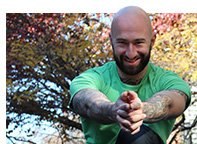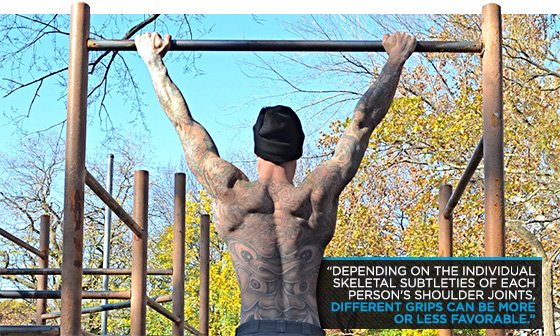Progressive calisthenics is a great way to build muscle, but it's also a useful tool to assess your strengths and weaknesses. While I always emphasize patience and consistency in training over a goal-centered attitude, you do need to work toward more challenging exercise variants in order to experience continued growth. There are certain benchmarks in the bodyweight strength world, like the pistol squat and one arm pull-up, which are as much a measure of strength as they are a means to build it.



In this edition of what I'm calling "Ask Al," we'll dig into those two exercises and others that I am asked about often. I've been training calisthenics for a long time and I've learned a lot of useful lessons along the way. I'm excited for the chance to share some of that wisdom with you. Bodyweight strength training might be simple in theory, but the practice is often complex.
Without further ado, let's get to the first question!
1 / I can almost do an unassisted pistol squat with my left leg, but my right is a lot weaker, and I struggle to get a few reps from a box. Should I do extra work to make it catch up? My left leg is getting impatient.
I noticed you said your left leg is stronger than your right. Are you right-handed? Though not always the case, it's common for people to be stronger on the leg opposite their dominant arm. In many sports and activities, we post off our left leg to use our right hand. Right-handed boxers lead with their left leg, right-handed pitchers throw from their left leg, and so on. If you've done these types of contra-lateral movements, or even if you haven't, there's a good chance you are cross-dominant.
But don't worry, it's normal to have some disparity between your two sides. No matter how you train, muscle imbalances are inevitable; the human body is never going to be perfectly symmetrical. However, it's still beneficial to strive for balance between your left and right sides.
My advice is to get your reps up on box pistols on both legs, giving your right side priority along the way. Don't be in a rush to get to the full pistol. That's how people get hurt. I recommend training your right leg first within each session. This will allow you to give it your full energy and attention. As the old saying goes, the squeaky wheel gets the grease!
2 / I discovered unexpectedly the other day that I can do a couple of self-assisted one-armed chin-ups! Hooray! However, I can still only do eight regular dead-hang pull-ups. Should I wait until being able to do more before practicing the one-armers?
Congrats on the assisted one-armed chins! As you've discovered, the self-assisted one-arm chin-up isn't that much harder on your muscles than a standard two-armer—depending on how much assistance you give yourself. While I'm all for movement exploration and personal experimentation, however, I would advise against seriously training for a one-arm chin-up until you can do at least 15 strict full-range-of-motion reps with both arms.
The one-arm chin-up is an advanced move, and training for it can put a lot of stress on your tendons and other connective tissue. Durable tendons come from years of dedicated training on the basics. If you're looking to mix things up, there are other two-handed variations, such as commando pull-ups, that may be better suited to your current strength level.
All Kinds of Pull-Ups
Watch The Video - 03:05
3 / Hanging leg raises suck. Or more accurately, I suck at them. Is it worth bothering with them when I'm so freaking bad at them?
The hanging leg raise is a fantastic exercise, but it may be too advanced for you at this point in your training. I recommend scaling back to a simpler variation, like hanging bent-knee raises. Focus on building up to 20 slow, controlled hanging bent-knee raises before returning to the full straight-legged version.
It'll also be helpful to focus on stretching your hamstrings if they're tight. While strength is often the limiting factor in performing the full hanging leg raise, a lack of posterior chain flexibility can further hold you back.
4 / Pull-ups and chin-ups both kind of hurt my wrists and/or elbows. Palms-facing pull-ups feel great, though. Is it OK to just do those, or do I have to mix it up?
Depending on the individual skeletal subtleties of each person's shoulder joints, different grips can be more or less favorable. It's not uncommon for fully supinated or fully pronated grips to impinge the shoulder joint in certain individuals. If you feel best working with palms facing each other, then there's your answer. Any time you experience a sharp pain during your workout that's your body sending you a warning signal. It's best to listen!

You might also try doing pull-ups on gymnastic rings to allow for rotation of your arms throughout the range of motion. Some people find that beginning in a pronated or partially pronated position at the bottom of a rep and rotating into a supinated or partially supinated position at the top gives them the best of both worlds. I personally prefer the classic overhand grip on a straight bar, but you have to listen to your body and do what's right for you.

